Are you wondering how to pack for a move?
We know that moving can be a very exciting time but the packing period before is usually filled with stress and frustration.
There are several guides out there to help you with the entire moving process but they can be lengthy because there is so much to know.
We’ve designed this guide to help you focus on one part of moving: how to pack.
Don’t be overwhelmed by guides with 30 tips or more. To help with this, we’ve compiled the 16 packing tips that you can’t ignore.
Let’s get started.
Tip #1: Gather Packing Supplies
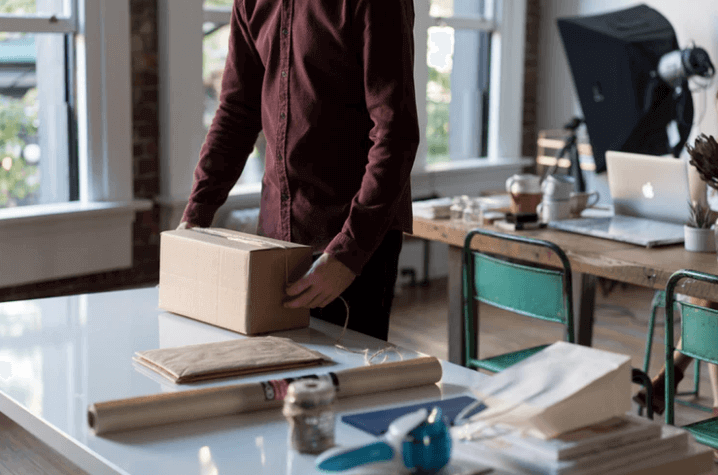
Photo by Bench Accounting on Unsplash
You will need multiple boxes to help transport your belongings to your new home.
Consider the different sizes you will need and make sure they are strong moving boxes.
If moving yourself, consider collecting the following materials to help:
- Plastic wrap
- Bubble wrap
- Newspaper
- Heavy-duty packaging tape
- Labels
- Cardboard storage boxes and Crates
If you choose to use old boxes, ensure they are strong enough to hold your belongings and are clean.
Choosing the right kind of packing material is crucial as it will ensure the safety of your belongings. Don’t know where to buy the best quality packing material?
Head over to STORED and buy high-quality packing and protective material at unbelievably low prices.
Don’t skimp on packing material as you don’t want to realise it’s not strong enough at the last moment and be short on boxes.
Get all of your packing supplies as early as you can to reduce your stress during this transition period and eliminate additional trips searching for an extra box or two.
Tip #2: Declutter To Pack Less

Photo by Sarah Brown on Unsplash
About two months before the actual moving day you should start decluttering as much of your belongings as possible.
Check out our complete guide on how to declutter your home.
The more you get rid of, the less you will have to pack.
Start with your bigger appliances and take note of which things you don’t want to bring with you.
If any appliances are staying in the house, clean them well to ensure you get your deposit back or sell the property.
Go room by room to see what items you are going to want in your new place. If you have some items that you don’t use often and need only once or twice a year, consider renting a storage unit instead of taking everything along.
STORED is the UK’s number-one storage and removal company that has economically priced storage units. With their all-inclusive service, they send out a team of experts who collect your belongings from your doorstep and take them back to the storage facility.
With STORED door-to-door service, you can declutter your belongings and store away stuff that you will not need in your new house.
You can get in contact with STORED for the bulkier and heavier items you choose not to bring with you.
Spend an entire weekend going through every clothing piece you have. We have also created a guide specifically for downsizing your wardrobe!
Consider what you haven’t worn in a while and either donate, sell or throw away depending on the condition.
Doing this will reduce the number of boxes you’ll need and it is less your movers or you will have to transport.
Tip #3: Create A Schedule & Moving Checklist
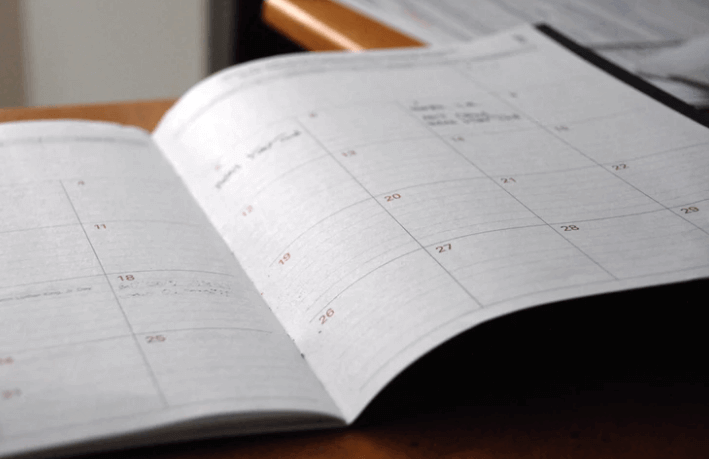
Photo by Eric Rothermel on Unsplash
Moving can be a very hectic time and the last thing you want is to forget something important when you pack for a move.
Start with a moving checklist of everything that needs to get done and work your way back through it to get everything completed in between your work and personal schedule.
If you are having trouble making your own checklist, use our complete checklist for moving house.
Create a timeline on your schedule as well to keep track of tasks needing to be done leading up to moving day.
Start with one room at a time, preferably with the rooms that you use less frequently.
You will also want to ensure you have a binder that has all relevant information relating to your move.
Removal companies contact, reservations, to-do lists and any important documents.
Once you have a clear picture of what you need to accomplish and by when it will simplify the moving process and reduce the stress and anxiety that come with moving.
Timeline Note: Don’t forget to clean, defrost, and towel dry your refrigerator about 24-48 hours before moving day to avoid a mess.
Tip #4: Document & Secure Loose Items
The first thing you should do before you start packing up an entertainment center is to take a picture of the setup in front and back.
This way you will have a record of where certain cords belong and will remember how you had everything organised.
This should also be done for any other large items that you will need to disassemble in order to move, like a washer and dryer set up.
Most people don’t think about this out of all the moving and packing tips but this will make unpacking a lot smoother and hassle-free.
Secure hanging cords with tape, place dryer/washer hookups in the items bin and tape together any furniture you disassemble.
Nothing is worse than having your removal team tripping over cords on moving day or unpacking to find you lost a small piece of something.
How To Pack A TV For Moving

Photo by Loewe Technologies on UnsplashIdeally, it’s best to use the box the tv was originally packaged in.
The next best option is to have as much cushion as possible.
Use a blanket, packing paper, or anything else that will protect it from scratches.
If you are using a moving truck, you will want to make sure to position the TV in between other larger items to keep it balanced.
Make sure you have enough cushion around the entire TV.
If this isn’t an option, make sure it’s leaning against a wall with a rope to secure its position. Still, place some packing material in between the TV and the ropes.
Tip #5: Pack Largest To Smallest
This tip applies to several different times in your packing process – when you are packing each box, when you are stacking boxes before the move and when you or the professional movers pack the moving truck.
We’ll go into more detail on packing each box below (specifically fragile items like glasses) but this tip needs to be applied when you are stacking your boxes as well.
Line your heaviest boxes along a wall in your designated spot (See Tip #8) and then stack them up from there, getting lighter as you go.
Keep applying this when thinking about how to pack a moving truck.
We’ll discuss this further in Tip #16.
Don’t only think about the size, think about the weight of the box as well.
If a smaller box is heavier, rearrange how you are stacking.
How To Pack Glasses For Moving

Photo by henry fournier on UnsplashWhen planning how to pack efficiently for a move, you’ll want to ensure the heaviest dishes go at the bottom and the lighter items on top.
You’ll need to be extra careful when packing your fragile items like glasses and cups.
Choose a medium-sized box rather than a large one so it won’t get too heavy.
Before you start wrapping and packing your glasses, line the bottom of your box with either crumpled up newspaper, hand towels, or anything that can provide a cushion.
- Individually wrap each glass with your preferred packing material and use tape to secure any loose ends.
- If you use newspapers, know that you will have to wash them once you move to your new home.
- Start with the larger items first. They’ll be at the bottom of the box while the lighter glass items will be at the top.
- Place a layer of packing material between layers of stacking.
- Socks can be great for stemmed items, like wine glasses.
Don’t fill your box up completely because you’ll need another protective layer on top with either hand towels or your choice of other material.
Tip #6: Pack Room By Room
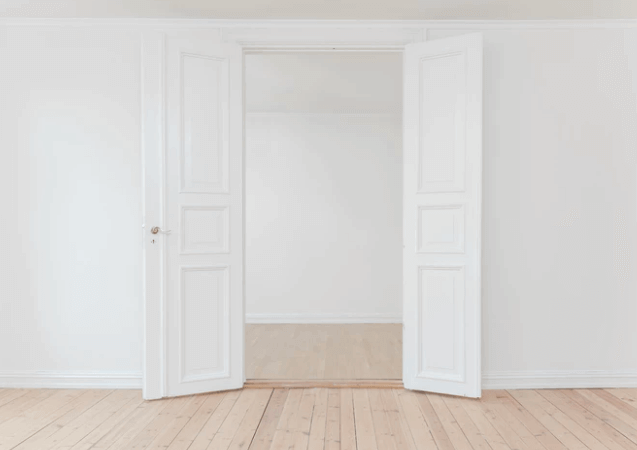
Photo by Philipp Berndt on Unsplash
It makes it easier to focus on everything you need to do when you plan to pack your home room by room.
Start packing one room at a time until you get to your common area spaces.
Be sure to label your boxes as you are packing your items so you can find things quickly when you unpack.
This will help if you’ve hired a removal company to assist you with your move.
They know what the boxes contain and where they’re supposed to go in your new house.
It’s also important to note which items your removal company can assist with and what they can’t.
Chemicals and aerosol cans are a few questionable items that you will need to confirm.
If you plan to pack a box a day you should be on track to successfully pack all of your stuff on time.
This will reduce your stress overall and ensure there’s no last-minute panic.
Tip #7: Leave Items In Drawers and Containers

Photo by Tatiana Rodriguez on UnsplashYou can leave lightweight items in your drawers to minimise the number of boxes you have.
This will also reduce the confusion on where smaller items are when unpacking.
Items such as jewelry are sometimes hard to pack because of their small size.
Leave them in your jewelry box to make it hassle-free when unloading to your new house.
Put cotton balls in the drawers and wrap it closed to avoid lost or damaged jewelry.
Make sure you wrap any fragile items you plan to keep in your drawers so it won’t get damaged in the move.
You’ll want to make sure you secure your drawers with tape so it doesn’t open during transit.
There is also heavy duty stretch wrap you can wrap around the whole furniture for extra caution.
This can also be useful when packing your kitchen supplies and utensils.
Cover your silverware trays with kitchen plastic wrap to speed up the packing process.
This tip is extremely useful when packing clothes as well!
How To Pack Clothes For A Move

Photo by Dan Gold on UnsplashDon’t waste time and boxes removing the clothes from your dresser to pack.
Only remove as many as needed to be able to comfortably lift it.
When packing bulkier clothes like winter coats or shoes, pack them in a suitcase.
You could also use space-saving bags to compress your clothes and then pack them as is or store them in boxes.
A great tip I received on how to pack clothes for moving is to use your clothes to wrap breakable items.
We’ll discuss this more in Tip #12.
Tip #8: Designate Area For Packed Items

Photo by Matthew Hamilton on UnsplashBefore you start getting into the rhythm of packing your shipping boxes, it’s a good idea to designate one area in your home for all the packed items.
Clear out a non-essential room or a section of a room that’s not going to get in your way.
You can stack your completed boxes here and make it simpler once the movers come.
Have all your packing materials in one convenient location so that you aren’t confused about where things are and you don’t have to waste time searching for something.
If you don’t have the space to clear out a whole room for this, no worries.
Claim a corner or counter where you can organise your boxes and packing materials.
Have extra boxes, labeling markers, and tape here to assist you in packing.
Tip #9: Pack Essentials Separately
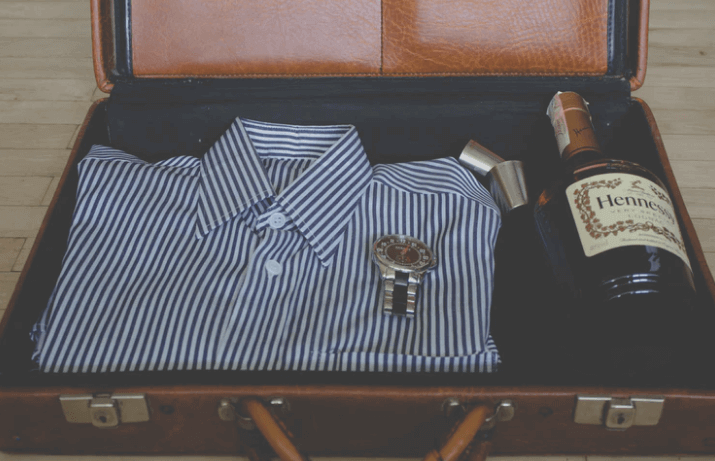
Photo by Angelina Litvin on UnsplashConsider what items you’ll need in your first couple of days when you move into your new home.
Your first night is usually chaotic and the more preplanning you do, the better.
Avoid having to dig through your boxes to find stuff and make the moving process easier.
This box should be the last box you pack before you move out of your old home and the first one you open when you have finished moving in.
If you’re moving long-distance, your essential box is even more important to have.
Unforeseen circumstances do arise and movers might be delayed a few days.
Some recommendations on what should be included:
- Toilet Paper
- Coffee and Tea
- First Aid Kit
- Dishtowel
- All-Purpose Cleaner
- Shower Curtain
- Toiletries
- Change of Clothes
- Garbage Bags
- Medicine
- Important records (passports, leases, medical and financial information)
The essential box should be catered to you and your family’s needs on what items you will most likely need the first few days moving into a new place.
Tip #10: Take Extra Time On Fragile Items
Everyone thinks they will pack for a move weeks in advance of moving day but the reality is, things come up.
You get stressed and preoccupied with all the other aspects of moving that moving day gets closer and closer but little progress is being made on packing everything up.
You don’t want to be rushed when wrapping and packing these items. Start early, use some other packing tips in this guide (like #5), and take your time.
Glassware, Mirrors and Picture Frames all need to be wrapped and transported carefully. Make sure to clearly mark these boxes as fragile before you move.
How To Pack Pictures For Moving

Photo by Jonny Caspari on Unsplash
Go around your home and collect all the pictures and paintings that are hanging on your walls.
See how much soft packing paper you will need to properly cover all your pictures.
Lay your picture frames face down on your packing material of choice and wrap it to ensure that all edges are covered.
Use extra sheets if needed to cover the frame.
You’ll then want to make sure it doesn’t unravel. Use as much packaging tape that’s needed so that it doesn’t come undone when moving it from place to place.
If you have loose photos laying around your house, there are a few options that would be best.
You can store them in physical albums, have a photo box, or digitally upload them.
While these things can be time-consuming, it’s something that you will feel accomplished with once it’s completed and well worth the hassle.
Tip #11: Leave Clothes On Hangers

Photo by Becca McHaffie on UnsplashMany people think you can only pack your clothes by folding them up in boxes but there are actually many other ways to pack them.
Instead of taking your clothes off of hangers, pack them together.
Use wardrobe boxes to pack hanging clothes or pull a garbage bag from the bottom of your clothes up to the hanger so the clothes are hanging inside of the bag.
Given the slippery nature of garbage bags, it can be hard to organise several clothing bags but this will save you on box costs.
Tip #12: Use Clothes As Packing Material
If you are reading this guide then you are probably wondering how to pack efficiently for a move.
Using clothes as packing material is one of the best moving tips for this.
Not only does it reduce the clothing in your dresser but it also protects your more fragile items.
How to Pack Dishes For Moving
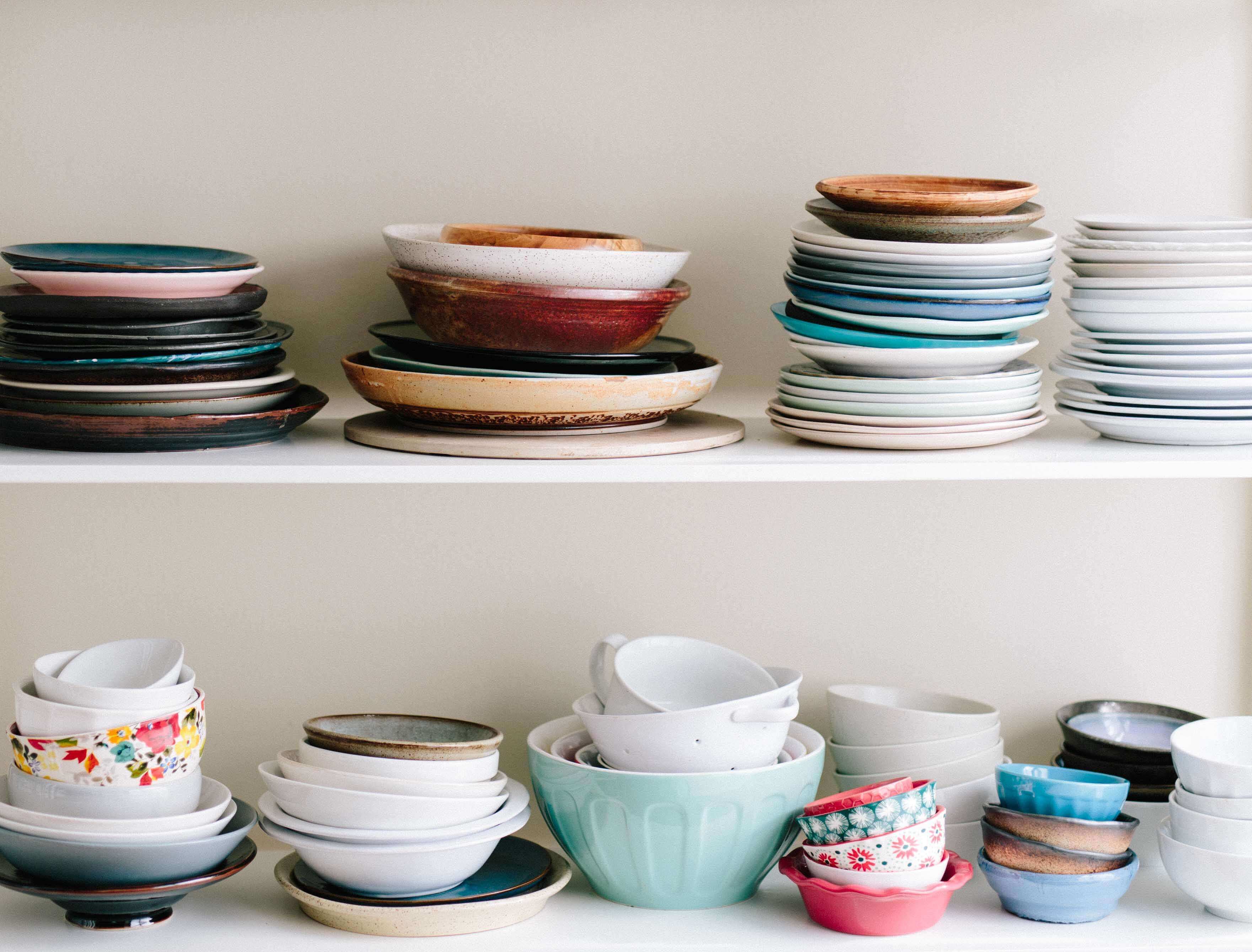
Photo by Brooke Lark on UnsplashWant to know how to pack dishes for moving?
The most important thing is to make sure your dishes are secure while packing boxes.
If you feel more comfortable with packing paper, you can use that but, as we mentioned above, using clothes to pack saves money and lightens other pieces of furniture you will be moving.
When packing glassware, wrap each item individually with packing paper or clothing.
Plates and bowls should be loaded in on their side when in a box.
Laying them flat could result in a broken dish when you unpack.
Once the first row of dishes is in the box, put another layer of packing paper or clothing on top for extra protection.
Continue this until the box is filled with dishes and packing material.
Whatever material you use, fill extra space in the box with it to avoid any damage to your dishes.
Doing this will prevent the dishes from moving and breaking in transit.
Tip #13: Use Cardboard Inside The Boxes As Well
Everyone knows you need cardboard boxes for moving but did you know you can use cardboard inside the box as well?
Cardboard can be used between layers of dishes or fragile items to keep them protected if stacking them inside a box.
There are also cardboard organisers that can be placed inside to help organise smaller items.
If you have thin or important items that could bend while moving, tape cardboard around them so they keep their shape.
How To Pack Books For Moving

Photo by Thought Catalog on UnsplashOne of the biggest mistakes people make while packing boxes is when they pack books.
They usually just stack them on top of each other from largest to smallest in size, mixing hardback and paperback in the same box.
Before you start packing any books, make sure your box can support the weight and secure the bottom with extra layers of tape.
Try to pack hardbacks and paperbacks in separate boxes if possible.
Pack hardbacks by standing them upright, spine against the box’s side, as if you were placing it on a shelf.
We recommend wrapping each one in packing paper before placing it in the box.
For more valuable books (or photo albums), place a stiff piece of cardboard between each one to keep the spine straight and reduce the risk of damage.
Paperbacks don’t require as much thought when packing. They can be laid down and stacked or placed standing up.
Tip #14: Pack Kitchen Early
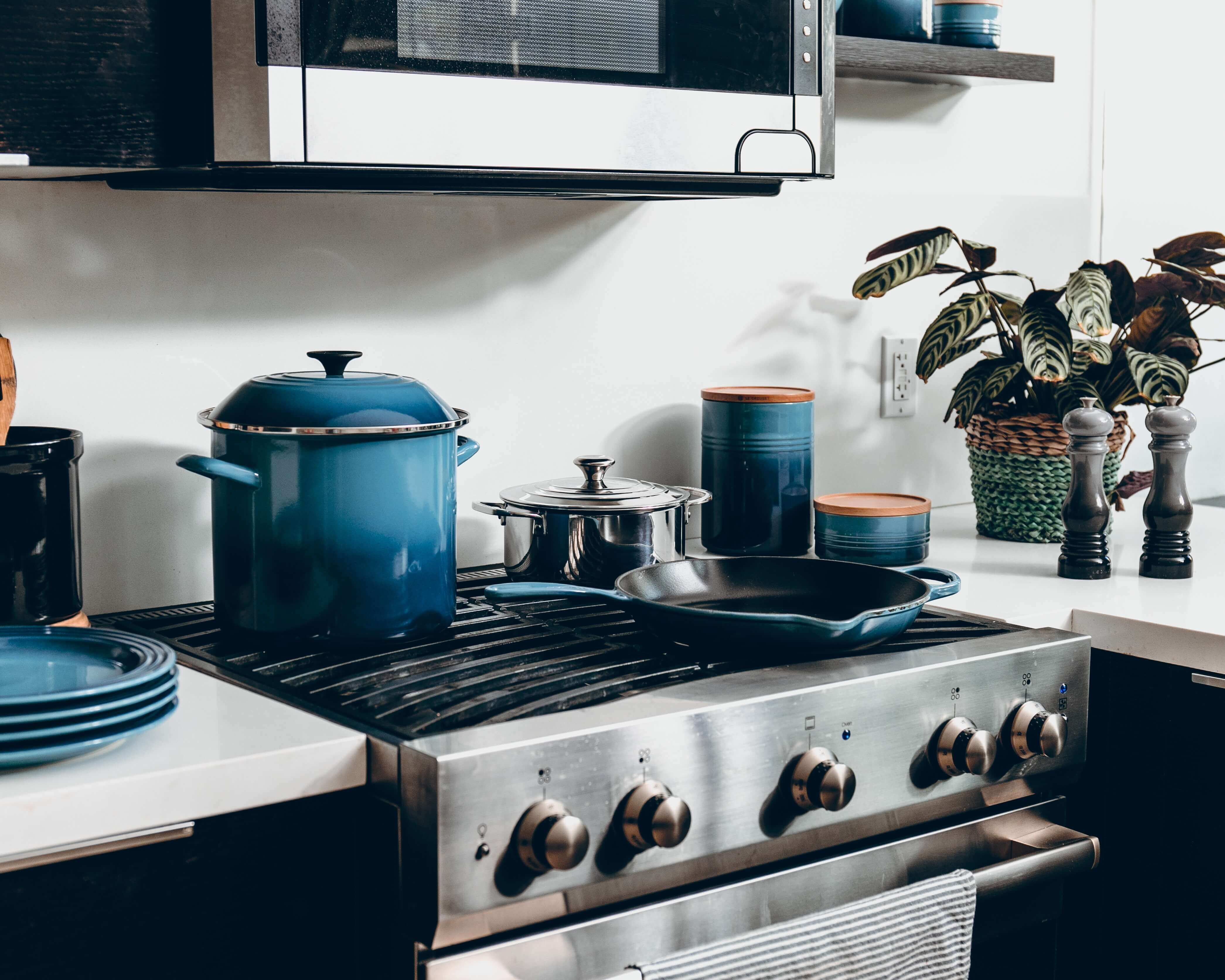
Photo by Dane Deaner on UnsplashIt might be tempting to leave your kitchen last because you use it frequently.
However, packing your kitchen will most likely be the most time-consuming room to pack.
You don’t want to be stuck at 11 PM the night before your move still rushing to get everything packed.
There are many different glassware and supplies that will need to be wrapped separately to ensure they don’t break on the move.
If you cook most of your meals, leave out a pan, pot, spatula, and oven safe cooking glassware until a few days before moving day.
Author’s Note: About 2 weeks before your move, go to the grocery store one last time and try to only get items that you will use in the next couple of days.
You don’t want to carry old food into your new home.
If you run out of food, think about eating out those days or purchasing items meal by meal to ensure there isn’t much excess left.
Tip #15: Cut Handles Into Your Boxes
Author’s Note: Do this before packing the box!!
Moving is very physically exerting on your body because of all the bending and lifting that is required.
Once boxes are packed it can be difficult to get your hands underneath to pick them up.
Before you start to pack for a move, cut handles into the boxes with a box cutter.
Some boxes might have premade handles but if not, this will help when you are picking them up and carrying them later.
Cardboard can be rough on your hands when moving all day so we suggest wearing gloves.
If you want, add them to your list of packing items you need.
Tip #16: Packing The Moving Truck
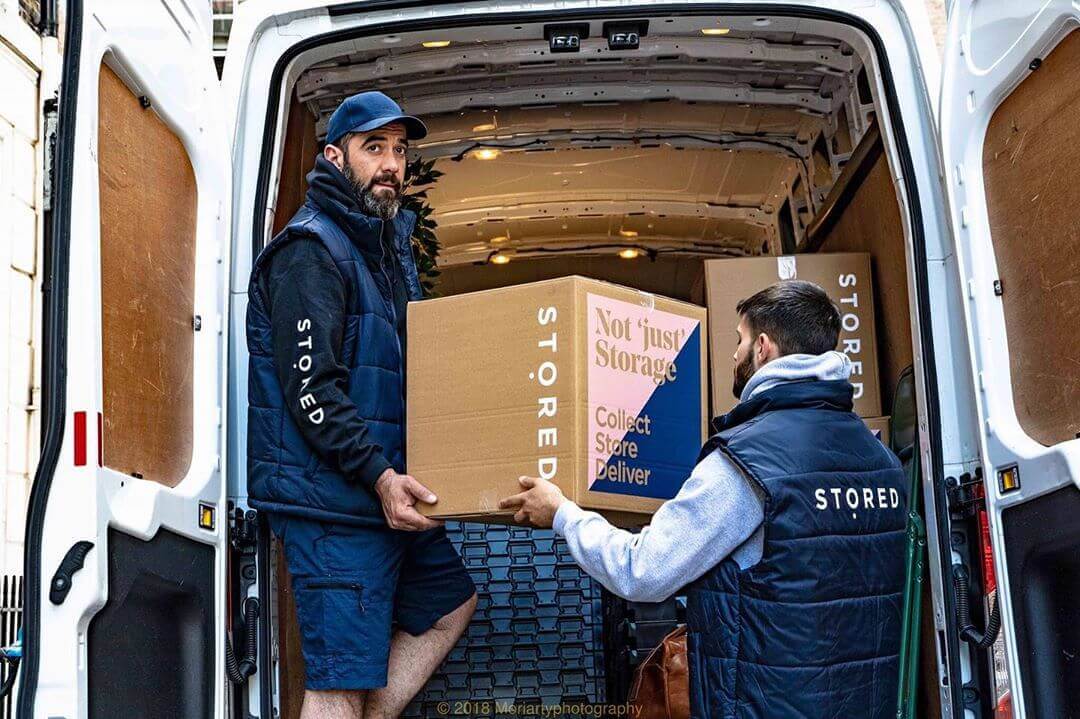
If you choose to move with us at STORED, you won’t need to worry about this tip but in case you want to handle the move yourself we’ve provided some information below.
First, you will need to determine the size of the rental truck you’ll need.
Companies will have a variety of different shapes and sizes to fit your needs.
It might be enticing to choose a smaller truck since it’s cheaper, however, you will need to make multiple trips and it will end up costing you more money and time going this route.
There are multiple ways to maximise your storage space in the back of your rental truck.
Think about your furniture shape and size before packing the truck and visualise how best all your boxes and belongings will fit.
Make sure to include blankets or padding to fill in the gaps of your stuff for extra protection.
And for larger items, have moving straps to secure their place in the truck.
You’ll want to load in the heaviest and largest items first.
Mattresses, bed frames, and couches should not be added at the end or on top for the risk of damaging other items.
Before you Go!
Did you know STORED offers a door-to-door moving service (removal service)?
If you go through this guide and start to feel overwhelmed at any point, let our team take care of the entire moving process.
Whether you are using us to move or store your items, you will get the same high level of service every time.
Removal packages include a 2-man team of our removal experts.
Other services are offered at a small additional price to make your move as easy as possible. To view those and request a quote, visit our removal service page.
We hope you find these tips helpful and they provide a stress-free period the next time you have to move house.
Enjoy your new location!


